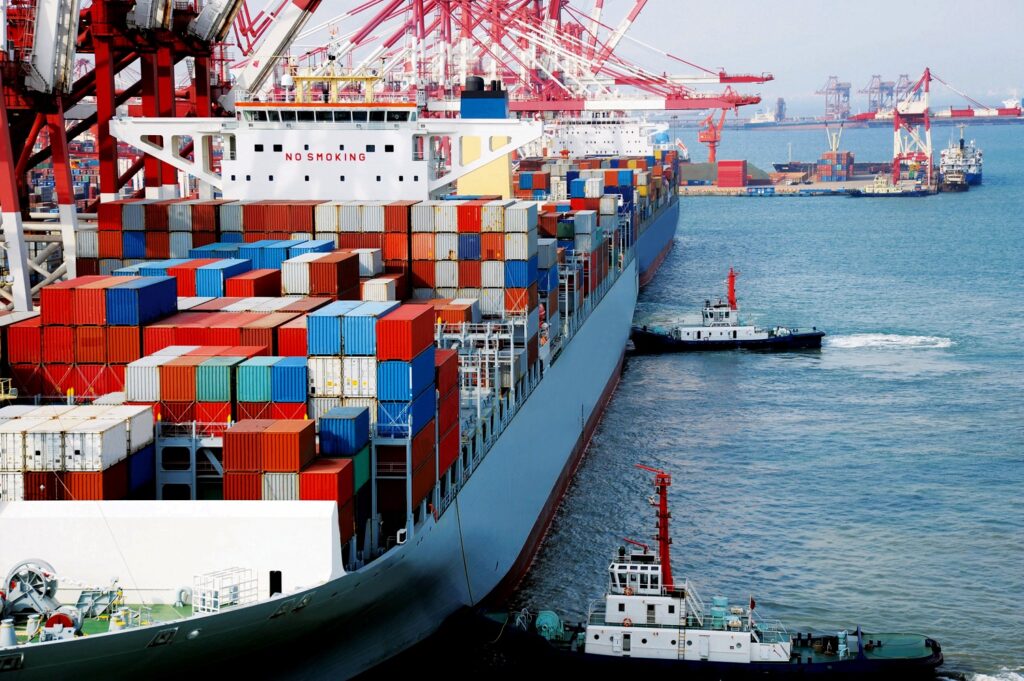SA Citrus Growers Association's Manager: "Logistics is a big obstacle right now"

At the beginning of the year, Mitchell Brooke, logistics development manager of South Africa's Citrus Growers Association, spoke about the importance of a report examining Southern African citrus exports, logistics, and shipping in 2024.
He said last year was an interesting one that will set the stage, logistically speaking, for many seasons to come. His positive outlook for this year relies on several developments, including a minister of transport who is taking pain points and constraints seriously, the dedicated team at Transnet and its committed COO, and the prospect of much-needed new equipment across container terminals.
Now that the report has been published, Brooke spoke with Freshfruitportal.com about what set last year apart and the key challenges that need to be addressed in South Africa's logistics sector to enable growth.
He said this stems from the organization realizing that "without improved efficiency in logistics, there will not be growth in our industry."
"This report seeks to take a ‘snapshot look’ at the past season's logistics and shipping and highlight some interesting events. It also aims to home in on some of the prevalent challenges," he added.
The biggest constraint for South Africa's import and export logistics environment—since 95% of its citrus is exported via containerization—is the challenge of delivering containers to terminals within an acceptable timeframe.
This is due to several hurdles, including the lack of rail transportation linked to road transportation, underperforming state-run Transnet container terminals, and widespread equipment failure at the terminals.
"Although there were no serious bottlenecks in the 2024 season, machine breakages and slow turnaround times did affect our growers considerably," Brooke said. "Transnet, the state-owned enterprise, has made progress at our ports in the last year, and new cranes and other port equipment are being commissioned as well, but the ports remain inefficient and will not be capable of handling the projected growth in citrus production over the next couple of years."
He said this is a major issue because South Africa could export 260 million 15-kilogram cartons of citrus by 2032 "if all role-players come together and remove obstacles."
"Logistics is a big obstacle right now. If we reach our 260 million carton goal, our industry can create 100,000 more jobs—jobs that are sorely needed in our country," he explained.
Southern African citrus relies on three logistics corridors: the Northern Corridor, the Central Corridor, and the Western Corridor. The report emphasizes the importance of these corridors in the logistics chain: "This was evident last season since each corridor faces a unique set of circumstances that are required to be navigated within the logistics and shipping process."
2024 presented "unusual dynamics across the main production corridors"
The Northern Corridor, for example, was especially affected by extreme weather and abnormally high international orange juice prices. In March, the region was estimated to deliver 92 million 15-kilogram cartons for export but ended up with a final volume of only 76.5 million cartons, the lowest production yield in recent years. However, the Central Corridor regions produced 52.94 million cartons in 2024, showing how all three regions respond differently.
"The Northern Corridor, citrus moving from the Limpopo and Mpumalanga provinces to the port in Durban, accounts for most citrus exports, and its rail network is underutilized," Brooke explained. "There is hope that this might change with the recent publication of Transnet's Network Statement, which sets the scope for private companies to use the rail network in the future."
Brooke said the port of Durban didn't experience serious delays due to lower-than-expected export volumes, but the Eastern Cape's production exceeded expectations. "This resulted in much more serious delays for our growers," he added.
In the Northern Corridor, Maputo port is a major hub for the association.
"Sustainable shipping options are available and being utilized by Maputo to access Middle Eastern markets," Brooke explained. Future export expansion from Maputo rests primarily on accessing essential markets in Asia, Southeast Asia, and the Far East. Should the port of Durban become too congested, Maputo remains an essential option for our growers."
South Africa's citrus industry has had great success in cold chain logistics and cold treatments. Cold storage capacity has expanded in recent years, and new facilities have been built. "The integrity of the cold chain is immensely important for us. It is essential to ensure both phytosanitary standards and the freshness of our high-quality product."
However, the organization expresses concern in the report about cold storage facilities being exposed directly to sunlight, which could jeopardize sensitive citrus varieties such as mandarins.
Brooke emphasized the importance of optimizing logistics in these cases. "Optimizing logistics and reducing the distance covered, as well as reducing the time products spend in ports waiting in cold storage, can make exports much more sustainable."
CGA calls on the government to focus on road and port optimization
The Citrus Growers Association has urged the government to focus urgently on logistics reforms. The newly appointed CEO of the association, Boitshoko Ntshabele, said, "2025 must be a year of action on the logistics front. There seems to be a general assumption that the logistics crisis is over, but we are not out of the woods yet."
The organization said container terminal efficiency remains low and that port efficiency must improve. The statement noted that a long-term solution is to create the public-private partnerships "that the government has committed to enacting."
The organization acknowledged the progress made at the ports but warned that the expected increase in citrus production would place further pressure on port infrastructure.















































